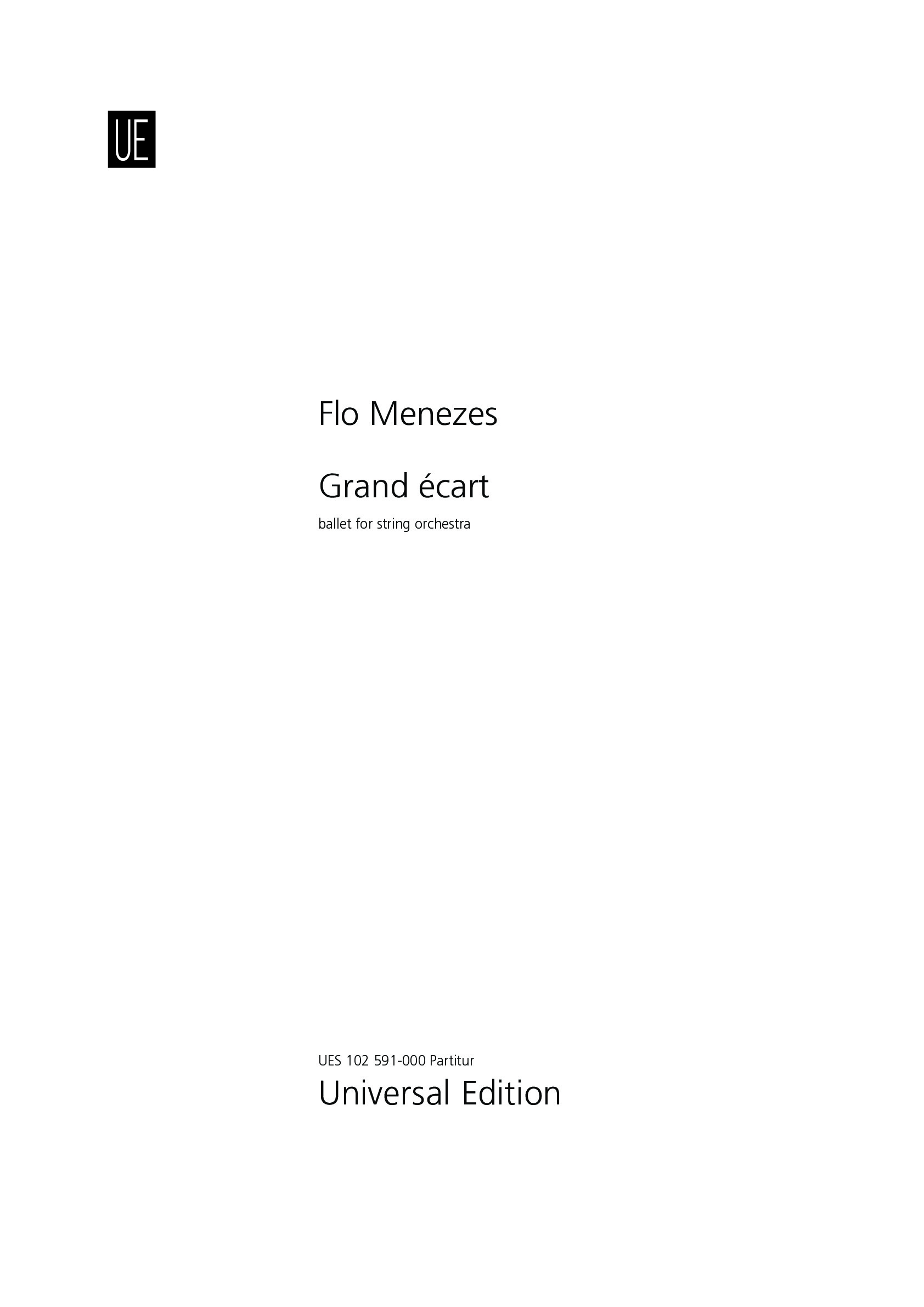

Flo Menezes
Grand écart
Short instrumentation: 0 0 0 0 - 0 0 0 0, str
Duration: 12'
Libretto von: Flo Menezes
Instrumentation details:
7th violin
8th violin
9th violin
10th violin
11th violin
12th violin
13th violin
14th violin
15th violin
16th violin
17th violin
18th violin
3rd viola
4th viola
5th viola
6th viola
violoncello
violoncello
19th violoncello
20th violoncello
1st double bass
2nd double bass
Grand écart
Printed/Digital
Translation, reprints and more

Flo Menezes
Grand écartType: Dirigierpartitur
Language: Französisch
Sample pages
Audio preview
Video
Work introduction
The ballet Grand écart for string orchestra (22 strings: 6.6.4.4.2) was composed between July and September 2012. The conception of the work is based on a terminology of the classical ballet as defined below:
"Écart, grand. Large écarté. The split.
Écarté. Separated, thrown wide apart. Écarté is one of the eight directions of the body, [Enrico] Cecchetti method. In this position the dancer faces either one of the two front corners of the room. The leg nearer the audience is pointed in the second position à terre or raised to the second position en l'air. The torso is held perpendicular. The arms are held en attitude with the raised arm being on the same side as the extended leg. The head is raised slightly and turned toward the raised arm so that the eyes look into the 1 palm of the hand." (GRANT, Gail: Technical Manual and Dictionary of Classical Ballet. New York: Dover Publications, 1982, p. 42.)
What interested me here was the extreme dilacerations of register as implied here by this spatial disposition of the dancers as well as the fact that grand écart is one of the 8 fundamental positions of the body in dance: in my work, two Harmonic Entities (two harmonic aggregates), each one submitted to distinct compressions of their respective registers, establish at all 8 resulting aggregates, from the upmost extended one (“grand écart”) to the most compressed one (to be achieved at the very end of the piece throughout a contractive directional process in 8 formal sections – Tableaux). Each Tableau has its own textural behavior across the general directional process of the whole piece. The first Entity, a “new” one named A, has its compressions as harmonies B, C and D; the second Entity, named E and derived from already existent Entities (as a hybrid summation of parts from the Entity of Pulsares and of parts from one Entity of Mahler in Transgress), is submitted to other 3 compressions: harmonies F, G and H.
The title makes also a subtle reference to one of my most “classical” works of the 1980, Profils écartelés for piano and tape, in which I worked on melodic profiles and their dilacerations over time by means of distinct harmonic techniques. In Grand écart I use mostly and almost exclusively my proportional projections (here contracting the harmonic spaces of the Entities). My other main harmonic technique, cyclic modules, was scarcely used, nevertheless a cyclic module was also derived from one of the two main Harmonic Entities (from Entity E) and was used for the soli of the Contrabasses near to the end of the piece as well as for the very first interventions of the Violins of the second orchestral group in the beginning of the work.
Grand écart is conceived in such a way that its structural development oscillates between orchestral and individual writing (in many passages as a writing for 22 soloists), in which the instruments are divided into two identical orchestral groups of respectively 11 instruments (structurally corresponding to the number of notes of the Harmonic Entities: 11).
Finally, in Grand écart we deal simultaneously with a directional contractive process of the harmonic space and a directional crossing strategy going from the very high notes of the beginning to a very low note D lasting at the very end of the piece as a contrasting pedal in the Contrabasses.
